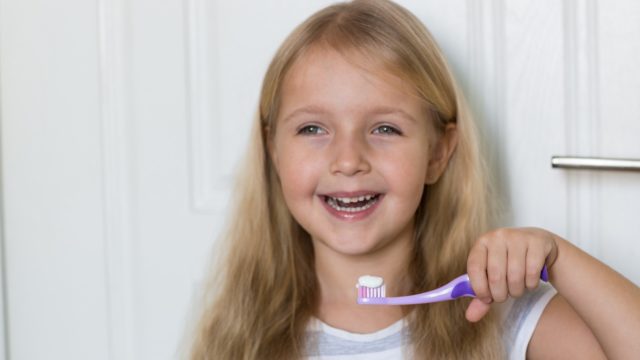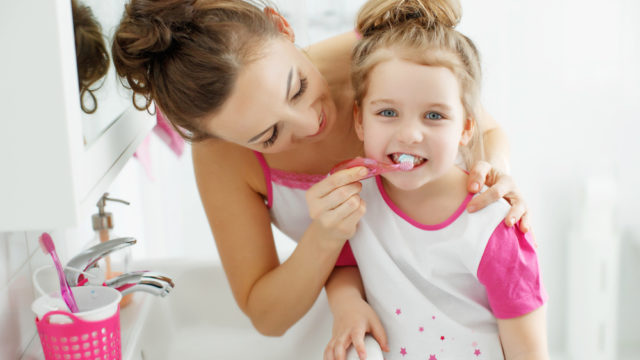 Article at a Glance
Article at a Glance
Toothbrushes should be replaced every three months, but you should take steps to keep your brush clean until the next replacement.
Clean a toothbrush by rinsing under warm tap water for a minute to clean off food and debris.
Disinfect your toothbrush with a cleansing solution or antibacterial mouthwash.
You can sanitize a toothbrush with heat or ultraviolet light.
You brush your teeth to remove food debris and bacteria from your mouth. Where does it go? Your toothbrush, of course. If you’re worried about the cleanliness of your toothbrush and wondering how to keep it clean, we’ve got answers for you!
The Importance of a Clean Toothbrush
Every time you brush your teeth, debris and bacteria from your mouth is transferred to the bristles of the brush. If you don’t clean your toothbrush, bacteria and germs can grow and multiply on the bristles. Gross! Never fear, there are plenty of steps you can take to keep your toothbrush clean between replacements.
How to Clean Toothbrush
A quick rinse in the sink after brushing may not be the best way to keep your toothbrush clean. For best results, you should run it under warm water for a minute or more to cleanse excess toothpaste and food particles from the bristles. Once your toothbrush is properly rinsed, allow it to air dry. Don’t forget to wipe the handle clean!
How to Disinfect a Toothbrush
If you’re disgusted by the thought of anything being left behind on your toothbrush, there are ways to clean a little deeper. Disinfecting your toothbrush may help prevent certain germs and bacteria from spreading.
- Pour a little antibacterial mouthwash in a cup and swish the brush head around for 30 seconds. Dump the mouthwash afterward – don’t use it!
- Combine two teaspoons of baking soda and one cup of water to make a cleansing solution. Soak your toothbrush for a few minutes then rinse and dry thoroughly.
- Add one teaspoon of 3% strength hydrogen peroxide to one cup of water and swish the bristles around before brushing.
- Soak the brush head in vinegar one night per week.
- Dissolve a denture cleansing tablet (follow the product’s instructions), and soak the bristles for several minutes.
How to Sterilize a Toothbrush
Unfortunately, you’re not going to find a guide for sterilizing a toothbrush because it’s not possible. To sterilize something means you are effectively killing every living organism on it and that’s not as easy as you’d think. However, there are two methods to sanitize a toothbrush meaning you’ll kill most of the bacteria.
- Sanitize a toothbrush using steam or dry heat to prevent bacteria from growing.
- Purchase a battery-operated sanitizer that kills bacteria using ultraviolet (UV) light. When choosing a sanitizer, be sure to select one that has been approved by the Food and Drug Administration (FDA).
Keeping Your Electric Toothbrush Clean
To this point, the tips have been primarily intended for manual toothbrushes. There are many differences between manual and electric toothbrushes. Fortunately, when it comes to cleaning them, they are not much different, but they may require a little extra care during cleaning.
You don’t want to get the electric components wet, but you do want to keep the base clean and clear of dried toothpaste and dirt. Be sure to follow the cleaning instructions for your specific model of electric toothbrush, especially if you have a smart toothbrush.
Tips for Maintaining a Clean Toothbrush
Once your toothbrush is good and clean, you want to keep it that way. Add these precautions into your oral care routine to prevent the spread of germs and bacteria.
- Don’t store your toothbrush in a sealed container. Keep it upright in a rack or cup to give it an opportunity to dry out.
- Wash your hands before brushing your teeth to prevent the spread of germs.
- Replace your toothbrush every three to four months or after an illness.
- Don’t share toothbrushes.
- Don’t put your toothbrush in a dishwasher or microwave to clean it because the extreme temperatures will damage it.
Keeping your toothbrush clean is a critical part of maintaining a good oral care routine. Remember, the best oral care routines include regular trips to your dentist. No matter how clean you keep your toothbrush, there is no substitute for regular check-ups and professional teeth cleanings. If you’re due to visit a dentist, the team at Jefferson Dental Care can help. Contact the office nearest you to make an appointment.
Our Jefferson Dental Content Committee supports our team by educational and informational articles related to what we do, oral care tips, and current events in our communities.




